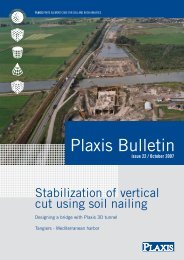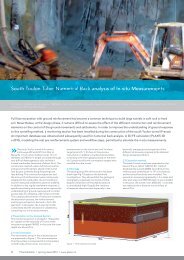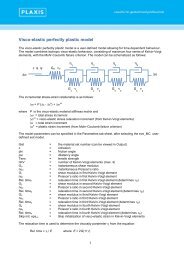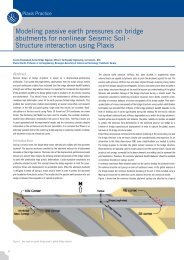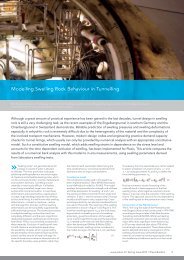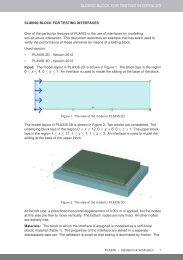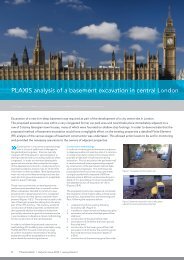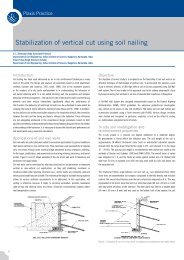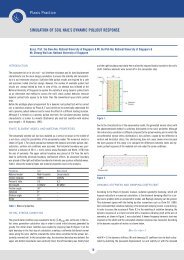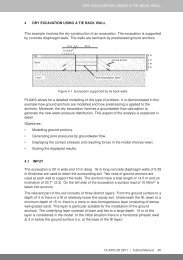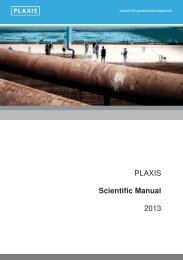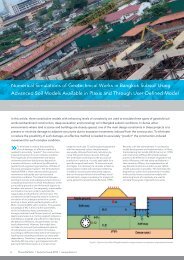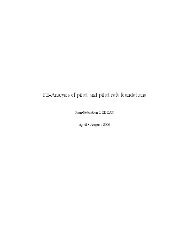PLAXIS LIQUEFACTION MODEL UBC3D-PLM - Knowledge Base
PLAXIS LIQUEFACTION MODEL UBC3D-PLM - Knowledge Base
PLAXIS LIQUEFACTION MODEL UBC3D-PLM - Knowledge Base
- No tags were found...
Create successful ePaper yourself
Turn your PDF publications into a flip-book with our unique Google optimized e-Paper software.
is the modelling target a drained cyclic direct simple shear test (DSS) is theproper test in order to be able to extract all the parameters for the <strong>UBC3D</strong>model.However, in many cases only data from drained triaxial tests are available(CD TxC). As the triaxial test does not involve principal stress rotation,the test data cannot in principal reflect soil response under principal stressrotation (Vaid et al., 1995). Puebla et al. (1997) proposed a set of equationsto be used in the original UBCSAND in order to include the effect of therotation of principal stresses in terms of stiffness. The equations proposedare derived by experimental observations and fit to the formulation of the<strong>UBC3D</strong>-<strong>PLM</strong> constitutive model also. They are derived as follows:For, 0 o ≤ a σ ≤ 45 o , then K p G = (Kp G ) 0{F − (F − 1) cos 2a} (1.33)For, 45 o ≤ a σ ≤ 90 o , then K p G = (Kp G ) 0F (1.34)Where:• and a σ is the angle between the major principal stress direction andthe vertical axis.• (K p G ) 0 is the plastic modulus number corresponding to a σ = 0 ◦ (verticalcompression);• F is the factor of anisotropic plastic response which is less than unity(proposed value 0.317);With the use of the proposed equations the plastic shear modulus (K p Gwhich is proper for modelling the direct simple shear stress path (a σ = 45 ◦ )is possible if the one suits for triaxial compression is known. Even thoughwith this specific formulation the effect of principal stress rotation in termsof stiffness during plastic hardening can be modelled, the limitations of16



